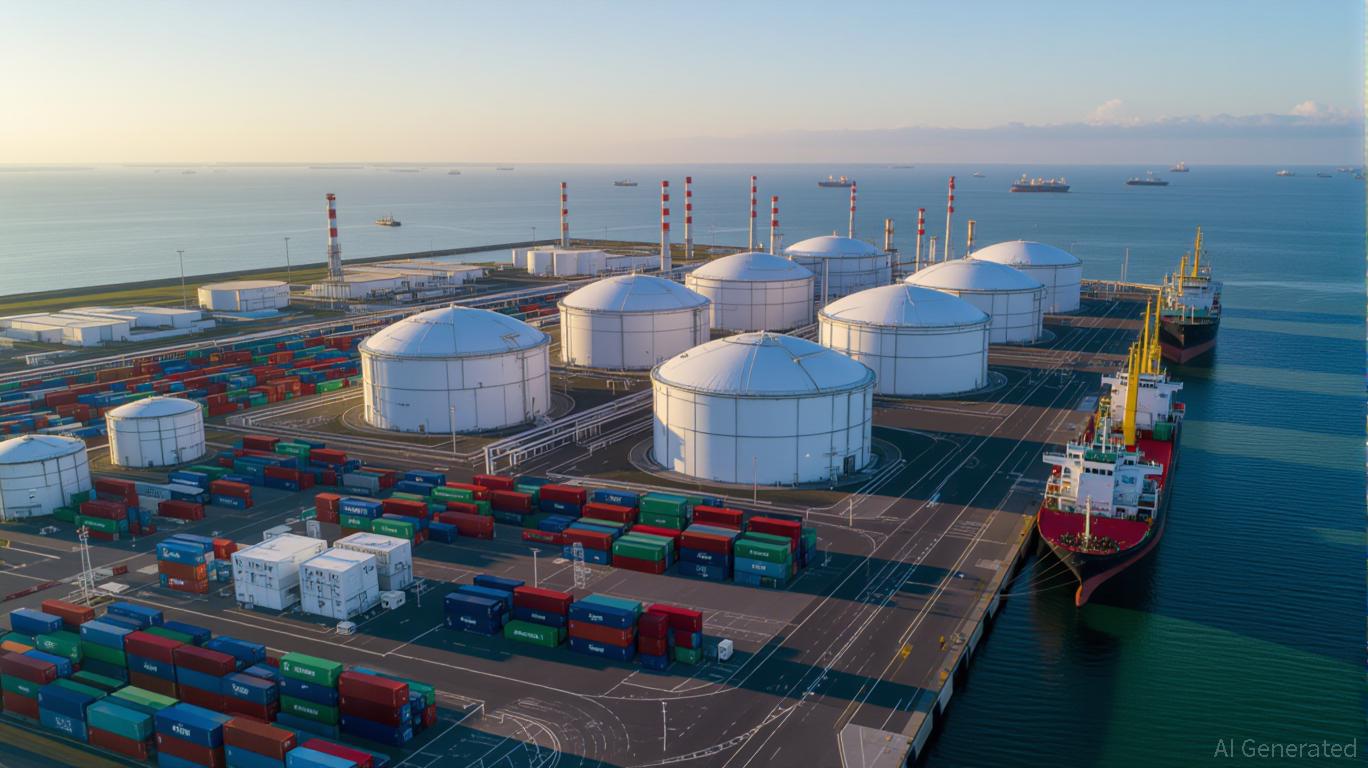
In a world where energy markets are increasingly shaped by geopolitical tensions and the urgency of decarbonization, Centrica’s recent investments in liquefied natural gas (LNG) infrastructure and partnerships represent a calculated bet on resilience and adaptability. The UK-based energy giant has positioned itself at the intersection of energy security and the long-term energy transition by acquiring a 50% stake in the Isle of Grain LNG terminal, one of Europe’s largest import facilities, and forging strategic alliances to mitigate risks in a volatile market. For investors, the question is whether these moves offer a sustainable path to value creation—or expose the company to the same uncertainties that have plagued the sector for decades.
The Isle of Grain: A Pillar of Energy Security and Transition
Centrica’s £1.5 billion acquisition of the Isle of Grain LNG terminal, co-owned with U.S. infrastructure investor Energy Capital Partners (ECP), is a cornerstone of its strategy. The terminal, located on the Isle of Grain in Kent, currently handles 20% of the UK’s annual gas demand and is set to expand its regasification capacity by 5.3 bcm, potentially meeting 30% of the country’s needs by 2030. This expansion is not just about scale—it’s about future-proofing. The terminal’s long-term contracts, which are 100% booked until 2029 and over 70% until 2038, provide Centrica with inflation-linked, stable cash flows in an otherwise volatile market. These contracts, with counterparties like Qatar Energy and Shell, insulate the company from short-term price swings while aligning with the UK’s pivot away from Russian pipeline gas post-2022.
The financials are compelling. Centrica’s equity investment of £200 million is supported by £1.1 billion in non-recourse debt, yielding an unlevered IRR of ~9% and an equity IRR of 14%+. The terminal is projected to contribute £100 million annually in EBITDA from 2026–2028, directly supporting Centrica’s £1.6 billion EBITDA target by 2028. But the real value lies in its adaptability. The terminal’s potential integration with hydrogen and ammonia infrastructure—aligned with the UK’s Clean Power 2030 Action Plan—positions it as a transitional asset capable of evolving with decarbonization goals.
Geopolitical Risks and the LNG Conundrum
The global LNG market remains a high-stakes arena. Geopolitical tensions, from the Strait of Hormuz to U.S.-China trade dynamics, continue to disrupt supply chains. For Centrica, the Russia-Ukraine war has accelerated the UK’s reliance on LNG imports, with demand expected to rise from 15% of gas consumption in 2024 to 60% by 2050. While this creates tailwinds for the Isle of Grain, it also exposes the company to risks such as regulatory scrutiny under the UK’s National Security and Investment Act and potential shifts in European demand.
However, Centrica’s partnership with ECP—a firm with deep expertise in U.S. energy infrastructure—mitigates some of these risks. ECP’s experience in grid reliability and energy transition technologies could unlock efficiencies and future-proof the terminal against obsolescence. Additionally, Centrica’s recent 10-year gas supply agreement with Devon Energy, which indexes pricing to European hubs, helps hedge against price volatility while expanding its U.S. LNG trading footprint.
The Energy Transition: Bridge Fuel or Dead End?
Natural gas’s role as a “transition fuel” is both a blessing and a curse. While it emits less CO₂ than coal, critics argue that LNG infrastructure locks in fossil fuel dependency, delaying the shift to renewables. Centrica’s strategy, however, acknowledges this duality. By investing in assets that can pivot to hydrogen and ammonia production, the company is hedging its bets on the energy transition. The UK government’s Hydrogen to Power (H2P) model and carbon capture incentives further support this pivot, creating regulatory tailwinds for hybrid infrastructure.
Yet, the long-term viability of gas in a net-zero world remains uncertain. If renewable energy costs continue to plummet and grid storage improves, the demand for gas could plateau. Centrica’s exposure to this risk is partially offset by its diversified portfolio, which includes the Sizewell C nuclear project and the Rough gas storage site. These assets provide a buffer against overreliance on LNG while aligning with decarbonization timelines.
Investment Implications: Balancing Risk and Reward
For investors, Centrica’s LNG strategy offers a mix of stability and growth. The Isle of Grain terminal’s long-term contracts and expansion plans provide predictable cash flows, while its potential to evolve into a hydrogen hub introduces upside. However, the company’s success hinges on navigating regulatory hurdles and geopolitical shifts. The recent regulatory approvals for the Grain acquisition are a positive sign, but delays or changes in UK energy policy could disrupt timelines.
The financial metrics are encouraging. With the terminal contributing £100 million in annual EBITDA and cash distributions averaging £20 million per year, Centrica is on track to meet its 2028 targets. The company’s debt structure, with non-recourse financing, limits downside risk. Moreover, its partnership with ECP brings operational expertise and capital, reducing the burden on Centrica’s balance sheet.
Conclusion: A Calculated Bet on Resilience
Centrica’s LNG investments are a masterclass in risk mitigation. By securing long-term contracts, diversifying supply chains, and future-proofing infrastructure, the company is positioning itself to thrive in a world of energy uncertainty. While the energy transition poses challenges, Centrica’s pivot to regulated infrastructure and its exploration of hydrogen and ammonia pathways offer a roadmap for sustainable value creation. For investors, the key is to balance the immediate returns from the Isle of Grain with the long-term risks of fossil fuel dependency. In a volatile market, Centrica’s strategy—anchored in resilience and adaptability—provides a compelling case for cautious optimism.
